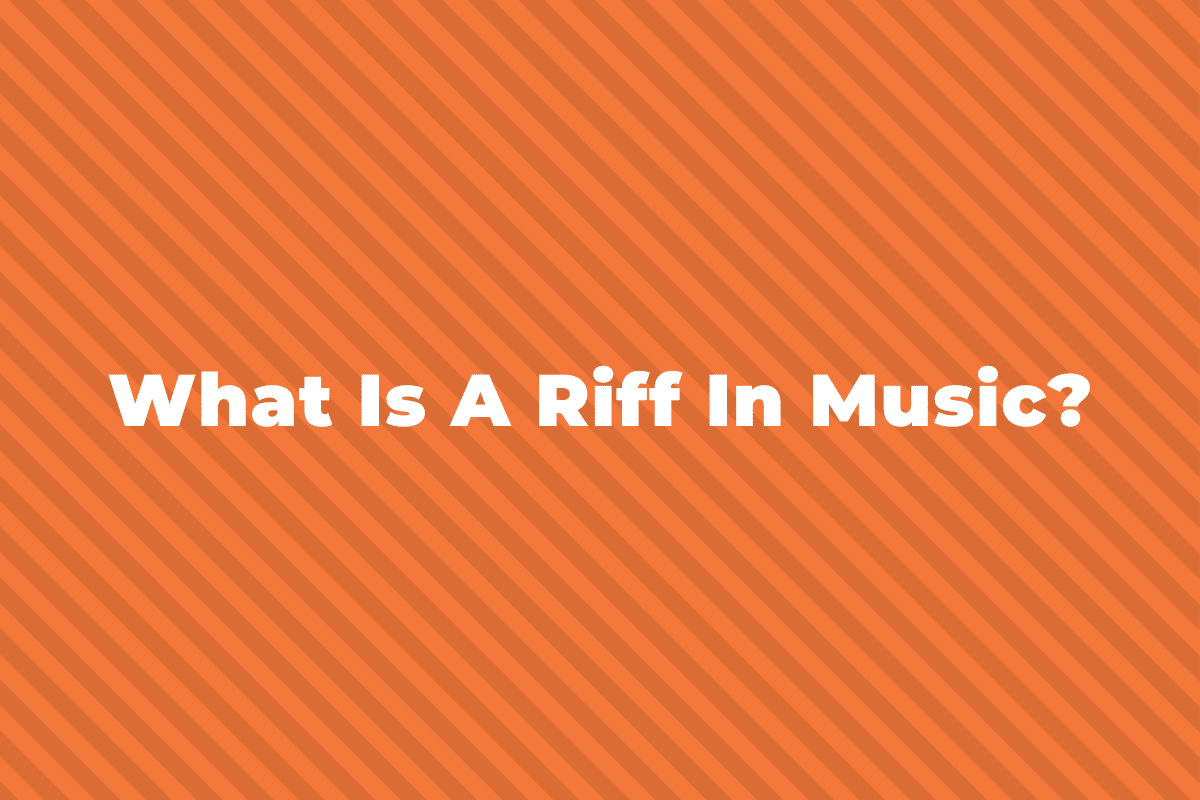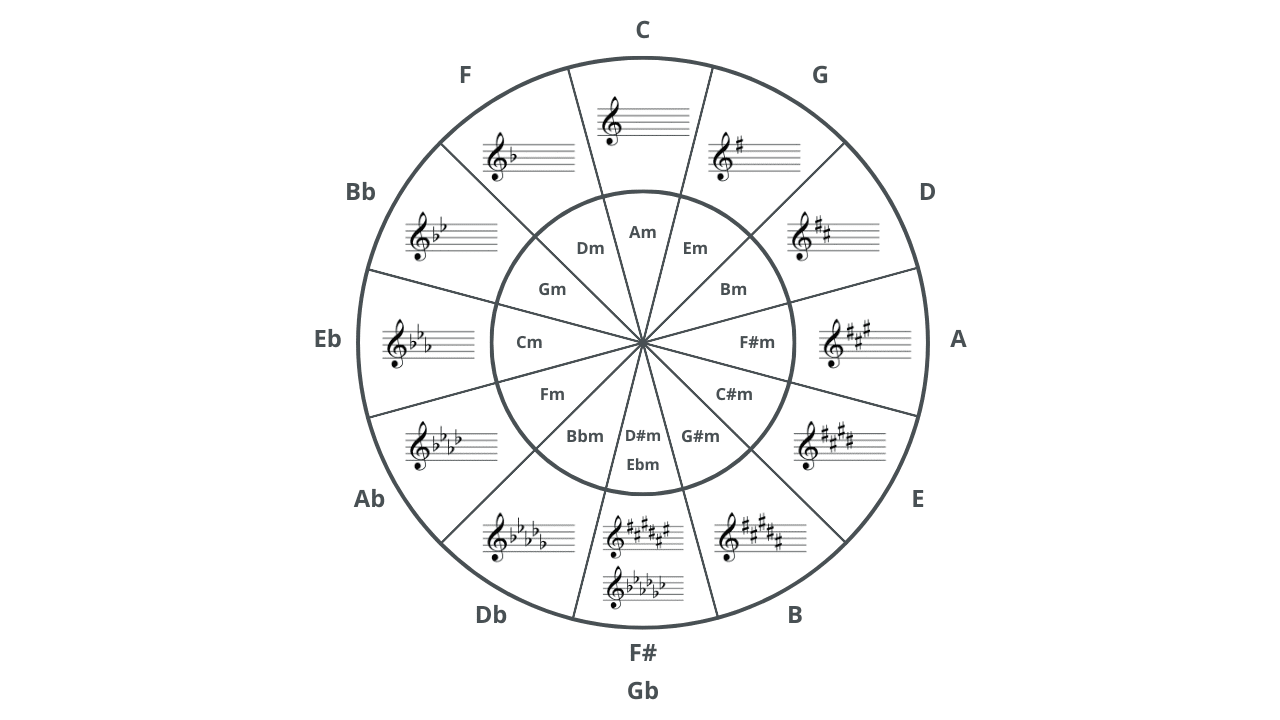In music, chords are the main building blocks of harmony and songs in general. There are many different kinds of chords, and each has a different harmonic function and reason why they work in the music.
In this post, we will be defining what a tetrachord is, how it’s used in music, and how to create one. To help us do this, we first need to define what a chord is.
What is a Chord?
Whenever you play or sing more than one note simultaneously, you are producing a chord.
A chord can have any number of simultaneous notes (as long as it’s more than one), and chords with different numbers of notes are called different names.
A chord with two notes is called an interval or a dyad, and a chord with three notes is called a triad.
Triads are the most common chord you find in music, and whenever you see a chord written with just a note – for example, C chord or F# chord – it signifies a major triad chord.
There are chords with more than three notes, like Sixth chords, Seventh chords, added tone chords, and extended chords.
Chords are generally built from scales, which are groups of notes sorted by pitch in either ascending or descending order.
For example, you most likely have seen this picture, which is a C Major scale:

Now, from this scale you can make a C Major triad by taking the first (called the root), third, and fifth notes – C, E, and G.
What is a Tetrachord?
A tetrachord is unique among musical terms with the word “chord” in them, because it actually is technically not a chord as defined above.
In fact, it is closer to a scale, because it is a series of notes played one at a time.
In Greek, the word “tetra” means four, so therefore a tetrachord is a series of four notes, with the extra specification that the four notes are taken from a span of five semitones, or half steps.
A semitone/half step is the smallest interval in Western music.
There are 12 semitones in an octave interval, as shown in the chromatic scale.
A whole tone is simply an interval of two semitones:

A span of 5 semitones is the same as a Perfect 4th interval.
C ⇨ F or G ⇨ C are examples of Perfect 4ths.
Therefore, an example of a tetrachord could be four notes spanning C ⇨ F or G ⇨ C.
All tetrachords have three intervals (in between the four notes) and these intervals are almost always either a semitone or a whole tone:

History and Uses of Tetrachords
The first people to use tetrachords and develop music theory from them were the Ancient Greeks.
They developed three types of tetrachords – diatonic, chromatic, and enharmonic.
Diatonic Tetrachords
In a diatonic tetrachord, the three intervals used are two whole tones and one semitone.
An example would be a Major or minor tetrachord (e.g. C – D – E – F or A – B – C – D).

Chromatic Tetrachords
In a chromatic tetrachord, there is one interval that is a minor third, and two semitone intervals.
This is a rare example of a tetrachord with an interval greater than a whole tone.
An example would be D – E#(F) – F# – G.

Enharmonic Tertrachords
An enharmonic tetrachord is one you’re likely to never see used.
It has one interval of a major third (four semitones) and then two intervals of half a semitone.
Because this involves microtonal notes (e.g. B half-sharp), it is hard to notate and even harder to play.
Use of Tetrachords by The Greeks
The Greeks had specific names for the four notes of a tetrachord.
In ascending order they were:
- hypate
- parhypate
- lichanos
- mese
While these terms aren’t widely used today, you still might see them sometimes when identifying notes in a tetrachord:

Use in Classical Music
In the Classical and Romantic Era, tetrachords were based upon equal temperament, and were used to explain many types of scales, like major and minor:
The Major tetrachord uses the interval pattern tone – tone – semitone (e.g. C – D – E – F).
The minor tetrachord uses the interval pattern tone – semitone – tone (e.g. C – D – Eb – F).
The harmonic tetrachord uses the interval pattern semitone – minor third – semitone (e.g. C – Db – E – F).
The upper minor tetrachord uses the interval pattern semitone – tone – tone (e.g. C – Db – Eb – F).

To make the average scale that we use in modern music, all you have to do is stack these tetrachords on top of each other, putting the second (top) one a whole tone above the end of the first one – for example, a Major C – D – E – F plus another Major tetrachord G – A – B – C makes up a C Major scale.
The second tetrachord starts on G, which is a whole tone above the F at the end of the first tetrachord.
| Tetrachord Stack | Intervals (T = tone, S = semitone, m3 = minor 3rd) | Scale |
| Major + Major | T-T-S : T : T-T-S | Major |
| Minor + Upper Minor | T-S-T : T : S-T-T | Natural Minor |
| Major + Harmonic | T-T-S : T : S-m3-S | Harmonic Major |
| Minor + Harmonic | T-S-T : T : S-m3-S | Harmonic Minor |
| Harmonic + Harmonic | S-m3-S : T : S-m3-S | Double Harmonic/Gypsy Scale |
| Major + Upper Minor | T-T-S : T : S-T-T | Melodic Major |
| Minor + Major | T-S-T : T : T-T-S | Melodic Minor |
| Upper Minor + Harmonic | S-T-T : T : S-m3-S | Neapolitan Minor |
Summing Up – Tetrachords
Tetrachords are a unique brand of chord because they aren’t multiple notes being played at once.
In fact, they act more like scales, and can be combined to make many different types of scales.
Overall, tetrachords are rare and aren’t often mentioned by name in music theory, but they have a strong influence on melody and harmony writing, so it’s helpful to be aware of them.



